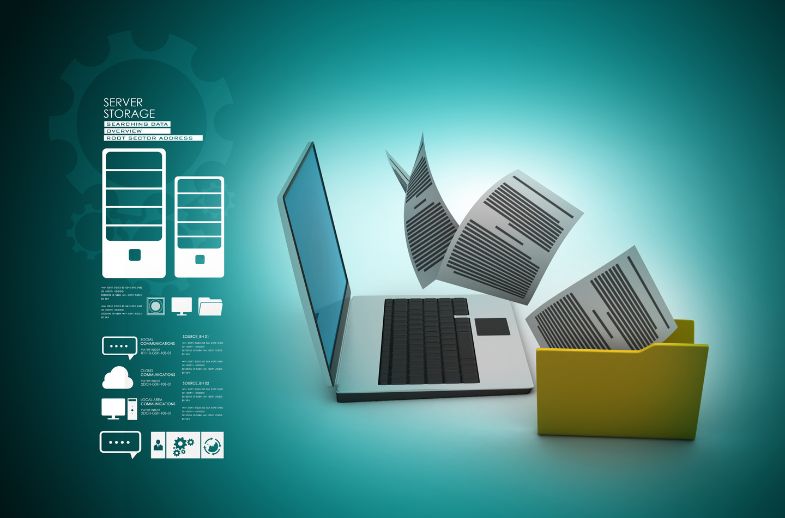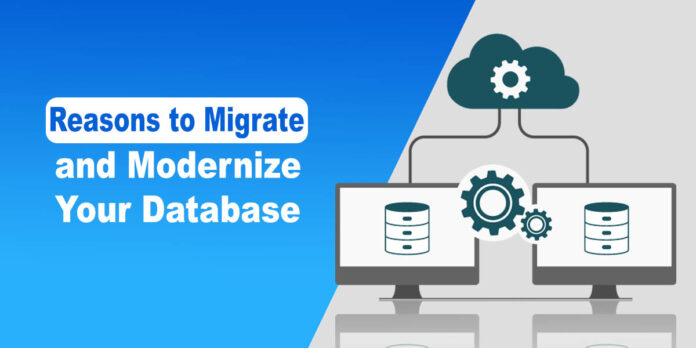An outdated database can slow your business’s growth, security, and efficiency, as technology is growing day by day. So, it is smart decision to adopt new technologies to remain upto data with modern world.
That is why businesses need to move and modernize their data. It will help to improve performance, security, scalability, and cost-efficiency.
It is not just about upgrading technology, although these strategic moves can enhance your business operations.
Let’s explore the key reasons why migrating and modernizing your database is essential for your business’s success.
What Is Database Migration?
Database migration means to move your data from one database system to another. It is two types of migration like transferring data from an on-premises database to a cloud-based solution or upgrading from an older database version to a newer one.
What Is Database Modernization?
Database modernization goes beyond migration. In this process, businesses update the database architecture, infrastructure, and technology stack to align with industry standards and best practices.
Therefore, the modernization of data requires the adoption of cloud technologies, automation processes, and data security improvements etc.

Key Reasons to Migrate and Modernize Your Database
Here are the top reasons you need to migrate and modernize your business database.
1. Enhance Performance and Scalability
Outdated databases often struggle to handle the increased data loads and complex queries that modern businesses require. This can lead to slow performance, bottlenecks, and downtime, which can negatively impact your operations and customer experience.
You can use advanced technologies that offer better performance, scalability, and reliability. This ensures that your database can grow with your business, handling larger volumes of data and more complex operations without compromising speed or efficiency.
2. Improve Data Security and Compliance
With the rise in cyber threats and stringent data protection regulations, data security has become a top priority for businesses. Legacy databases are often vulnerable to security breaches due to outdated security measures and lack of support for new compliance standards.
Modernizing your database allows you to implement robust security features, such as encryption, access controls, and real-time monitoring, to protect sensitive data.
Additionally, modern databases are better equipped to help your business comply with regulations like GDPR, CCPA, and HIPAA, reducing the risk of costly fines and legal issues.
3. Reduce Operational Costs
Maintaining an outdated database can be costly. Legacy systems often require specialized knowledge, frequent maintenance, and costly hardware upgrades.
Moreover, the inefficiencies associated with outdated databases, such as slower processing times and increased downtime, can lead to higher operational costs.
You can reduce these costs significantly by migrating to a modern, cloud-based database solution. Cloud databases offer pay-as-you-go pricing models, automated updates, and reduced need for on-premises hardware, which can lead to substantial cost savings.
4. Enable Data-Driven Decision-Making
Data is an essential asset in the digital age that drives decision-making and enterprise strategy. However, previous databases can make it tough to access, analyze, and interpret information effectively.
Modernizing your database allows higher integration with superior analytics equipment, Artificial intelligence (AI), and machine Learning (ML) knowledge of technologies.
This allowed your advertising enterprise to extract precious insights from your data, permitting quicker and more knowledgeable choice-making. With real-time statistics analytics, your enterprise can respond faster to market modifications, patron wishes, and operational demanding situations.
5. Support Digital Transformation Initiatives
Digital transformation is a key precedence for many organizations because it entails leveraging digital technology to improve tactics, products, and offerings. A modern database is the foundation of any successful virtual transformation initiative.
You can help the adoption of latest technology, inclusive of cloud computing, big facts, and IoT. This no longer best improves operational performance however additionally positions your commercial enterprise to innovate and live in advance of the competition.
6. Ensure Business Continuity and Disaster Recovery
Business continuity and disaster restoration are crucial components of any IT method. Legacy databases often lack the essential capabilities to make certain quick recovery and minimum downtime in the event of a disaster.
Modern databases, specifically cloud-primarily based ones, offer robust disaster healing answers, which include computerized backups, replication, and failover talents. By modernizing your database, you can make sure that your commercial enterprise remains operational even in the face of unexpected disruptions, shielding your facts and minimizing the effect on your business.
Read Also: 10 Ways Technology Could Will Change the World
7. Simplify IT Management
Managing and preserving a legacy database can be complicated and time-taking, requiring specialized talents and good sized assets. Database modernization simplifies IT management with the aid of automating habitual responsibilities, inclusive of updates, backups, and tracking.
Cloud-primarily based databases, in particular, offer centralized management equipment that permits your IT crew to display and manipulate your database surroundings from a single interface.
This reduces the burden on your IT personnel, allowing them to pay attention to extra strategic projects that pressure commercial enterprise value.
Migrate and Modernize Your Database – Easy Steps
You will need careful planning and execution to migrate and modernize your database. Follow the steps below:
1. Assess Your Current Database Environment
First of all, you can review your current database environment and check if you found any issue like security vulnerabilities, or compliance gaps.
In this way, you have an idea about your data and what you need to migrate and modernize.
2. Choose the Right Database Solution
Second, choose an easy solution according to your business goals and needs. However, you must consider factors such as security, compliance, scalability, and security systems.
You can select between cloud-based solutions or on-premises upgrades, but it is important that your new system supports your future growth.
3. Plan the Migration Process
Now, you must develop a plan to migrate data. You can outline the all steps, the timeline, and what are the resources required.
You can also consider a data migration strategy, a risk management plan, and a rollback plan.
4. Test and Validate
Before you complete the process, its time to test and check is your all data has been transferred accurately or not. Check that your new system is functioning correctly.
Moreover, validate the performance, security, and compliance of the modernized database to ensure it meets your requirements.
5. Train Your Team
It is important to train and inform about new systems and data. This will make them comfortable withe the new database system.
However, it will also minimize disruptions and ensure smooth operations.
6. Monitor and Optimize
After the migration, continuously monitor the performance of your new database system and make any necessary adjustments to optimize its performance.
Regularly review your database environment to ensure it continues to meet your business needs.
To Sum Up
If you want to be updated with digital landscape, then you must focus on latest technologies for convenience. However, migrating the old data is smart decission to stay update and competitive.
It helps you unlock new opportunities with modern databases through improved security, performance, and data-driven decision-making.
You can get help from the experts for your data migration who will assist you through the process to achieve your best outcomes. Make sure to take action and adopt the modernized database strategy.

